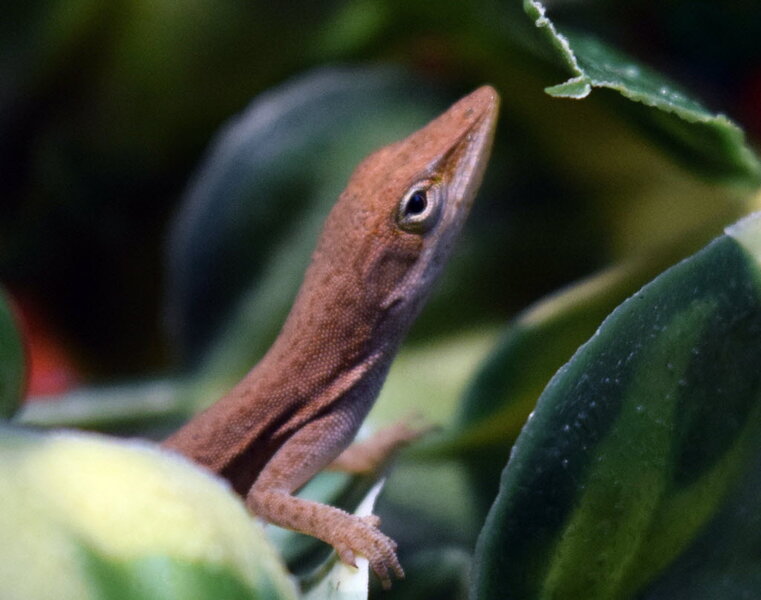Why climate change could be fatal for lizards
Loading...
A warming world may be more dangerous for the world's thousands of lizard species than previously thought, new research suggests.
As cold-blooded animals, lizards rely on the external environment to regulate their internal temperature by rotating between sun and shade. That makes them particularly sensitive to climate change and a number of species and local populations of lizards have already gone extinct as a result.
Previous studies, however, may have underestimated just how susceptible lizards are to the changing climate.
A new study that incorporated the effects of shade availability on lizards suggests that global warming may be having a more dramatic effect on lizards and their ecosystems as the lizards spend more time and energy seeking out patches of shade to cool down in.
"The real fear is that previous research has underestimated the risk of extinction," Mike Angilletta, a professor at Arizona State University's School of Life Sciences and co-author of the study, said in a statement. "Most models assume that an animal can be anywhere in its environment at any time, which doesn't account for how much energy an animal spends to regulate its temperature. Animals have to move and search for shade, which makes cooling down more difficult when patches of shade are far apart."
The study looked at the strain and limitations that thermoregulation puts on lizards in an increasingly warm world.
To simulate this situation, the research team implanted temperature sensors into nine groups of spiny lizards and placed them in constructed enclosures in the New Mexico desert. Each enclosure had either one large patch of shade, four medium patches of shade, or 16 small patches of shade.
Lizards with more smaller patches of shade were able to regulate their body temperature much more successfully than those with one large patch, whose temperatures varied by as much as 12 percent.
"Everything in between, all bets are kind of off now," Michael Sears, a biologist at Clemson University who was the study's lead author, told NPR. "because what our study suggests is that how bushes are placed in an environment might really impact the lizards just as much as the temperature itself."
Researchers fear that without adequate shade, lizards will have an even more difficult time adapting to climate change and that their potential extinction will ripple throughout the food chain of their ecosystems.
Lizards are both an important food source for birds and snakes among other animals and predator to many insects, according to Barry Sinervo, a professor of ecology and evolutionary biology at the University of California, Santa Cruz.
"We could see other species collapse on the upper end of the food chain, and a release on insect populations," Professor Sinervo told University of California Santa Cruz news center in 2010.
Sinervo's 2010 study predicted that by 2080, 20 percent of lizard species will be extinct as a direct result of climate change. While his model has accurately predicted locations where lizard extinctions have since occurred, Professor Sears, Professor Angilletta, and their team fear that 20 percent may be too low of a number.
"Scientists studying climate warming will now be forced to evaluate the spatial distribution of sunny-shady patches, and not just compute the fraction of an area that is sunny or shady," Raymond Huey, a professor emeritus of biology at the University of Washington, said in the ASU statement. "Frankly, that makes our research lives much harder, but also much more interesting."








